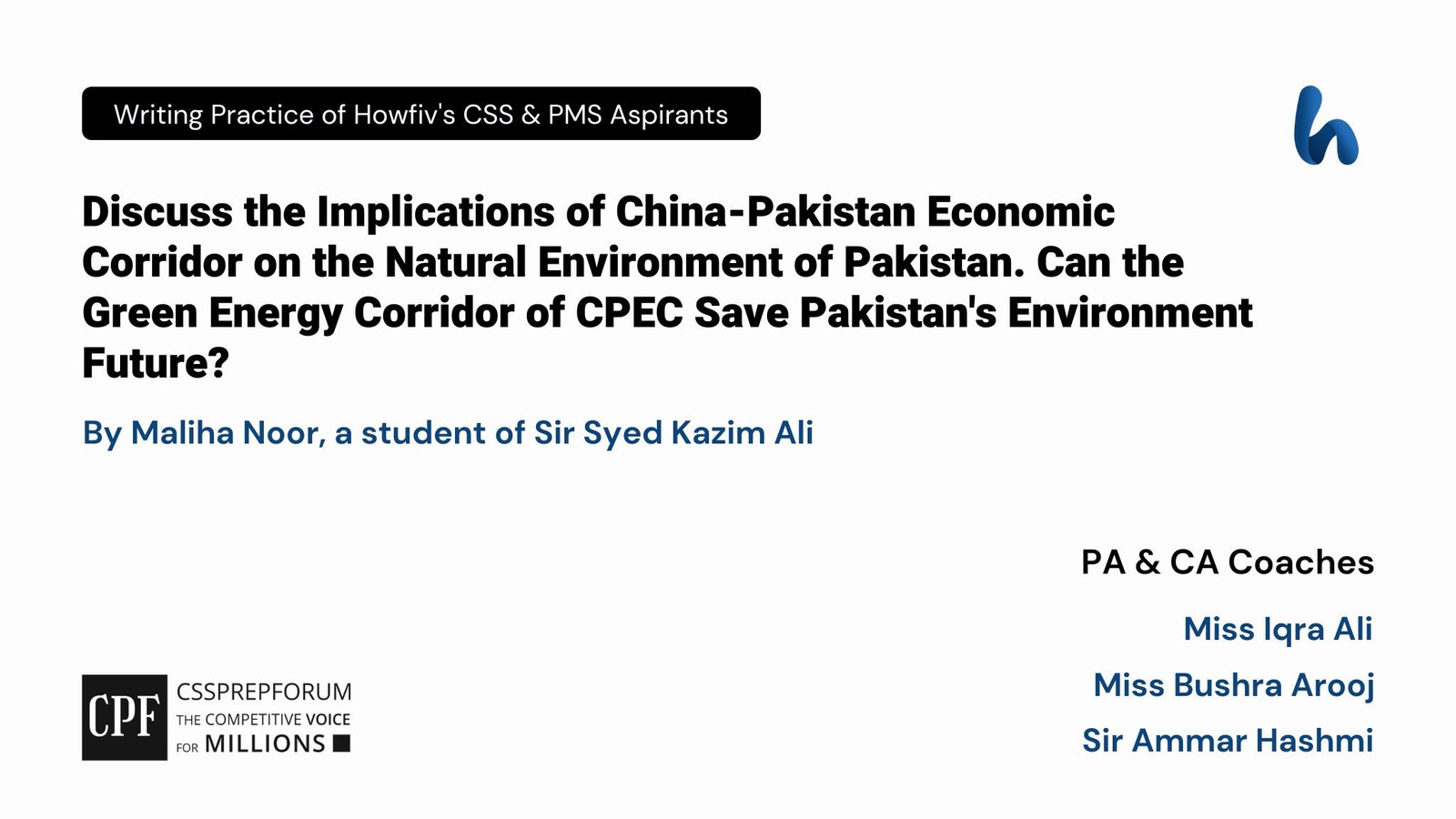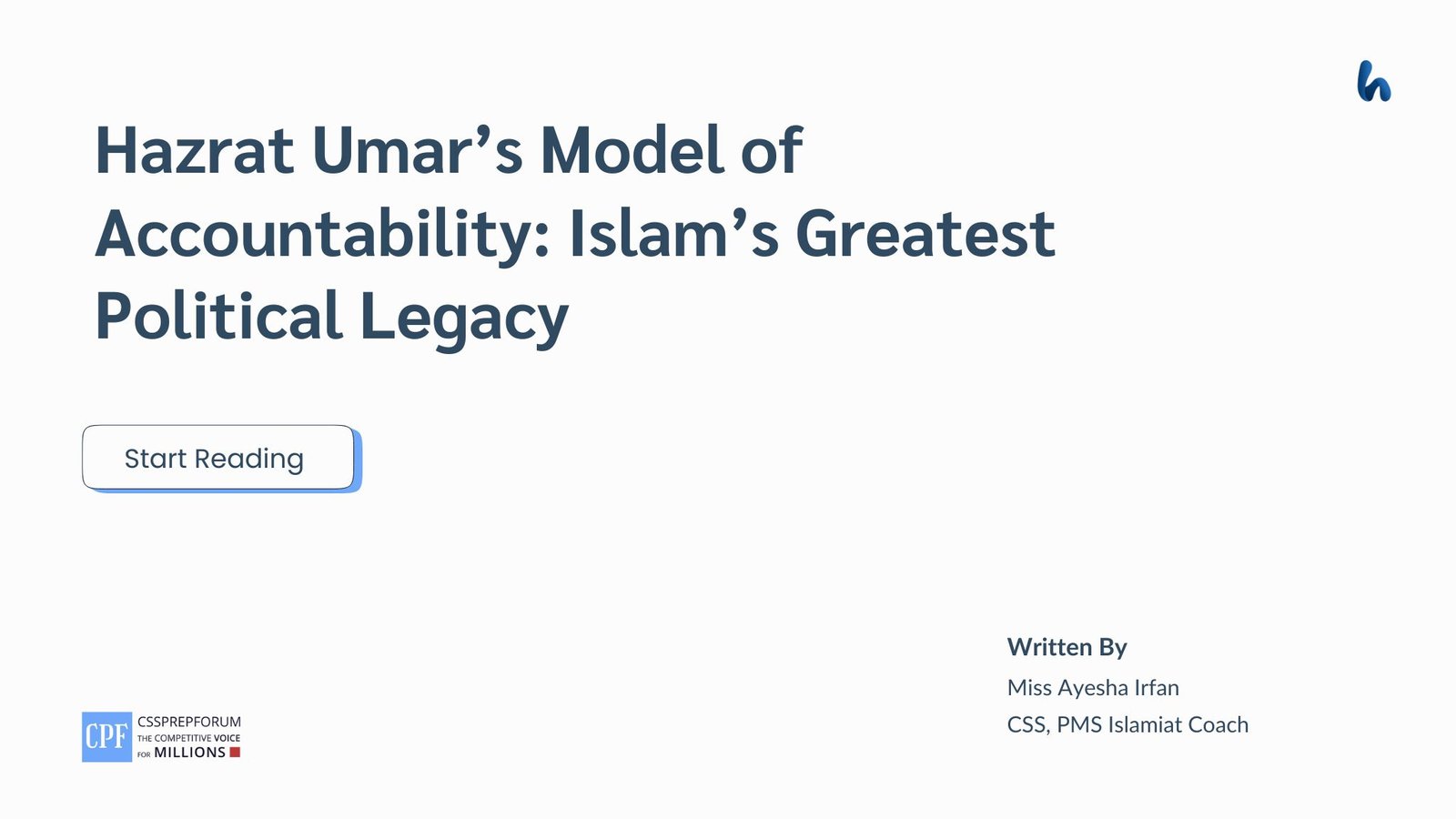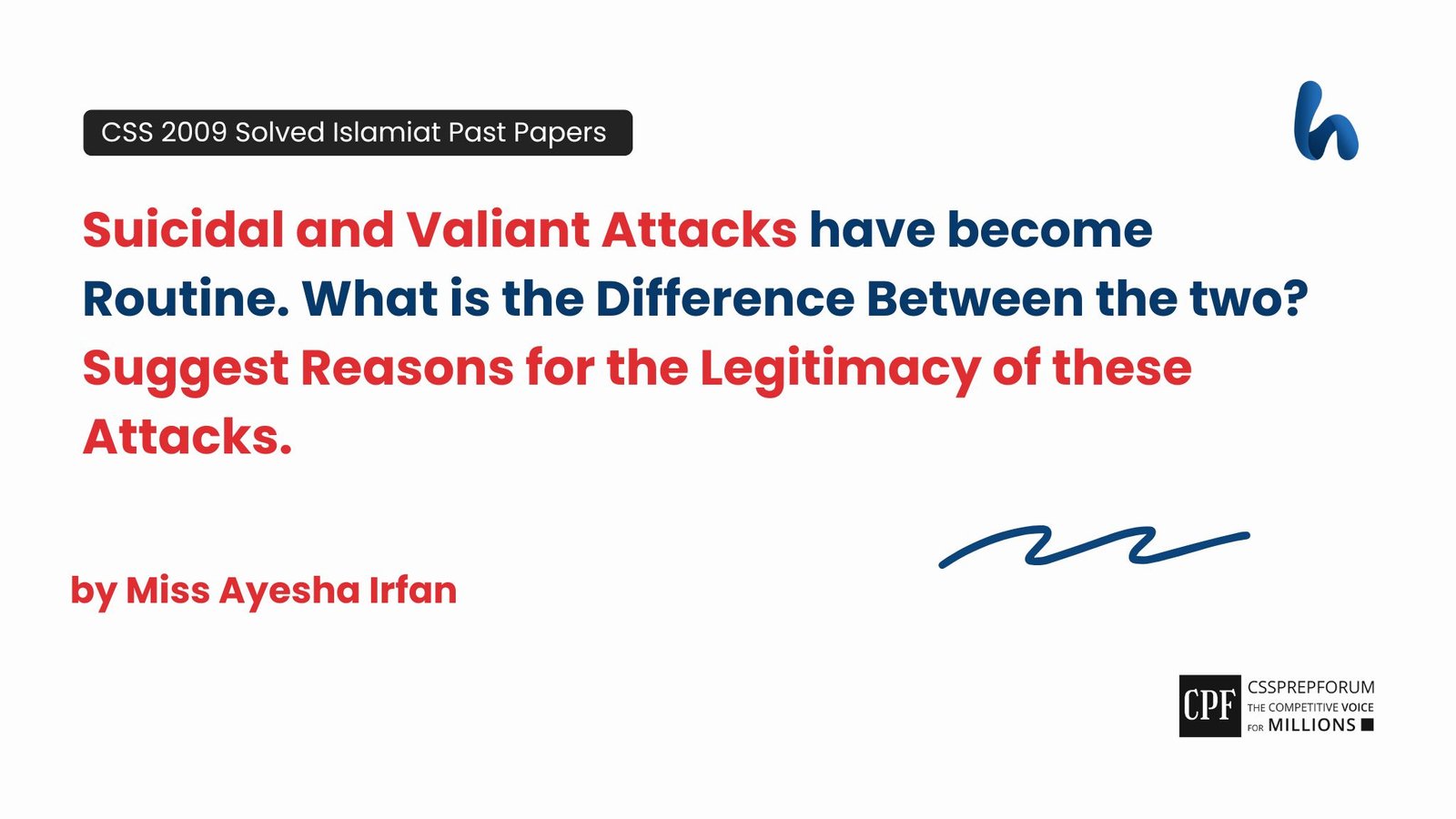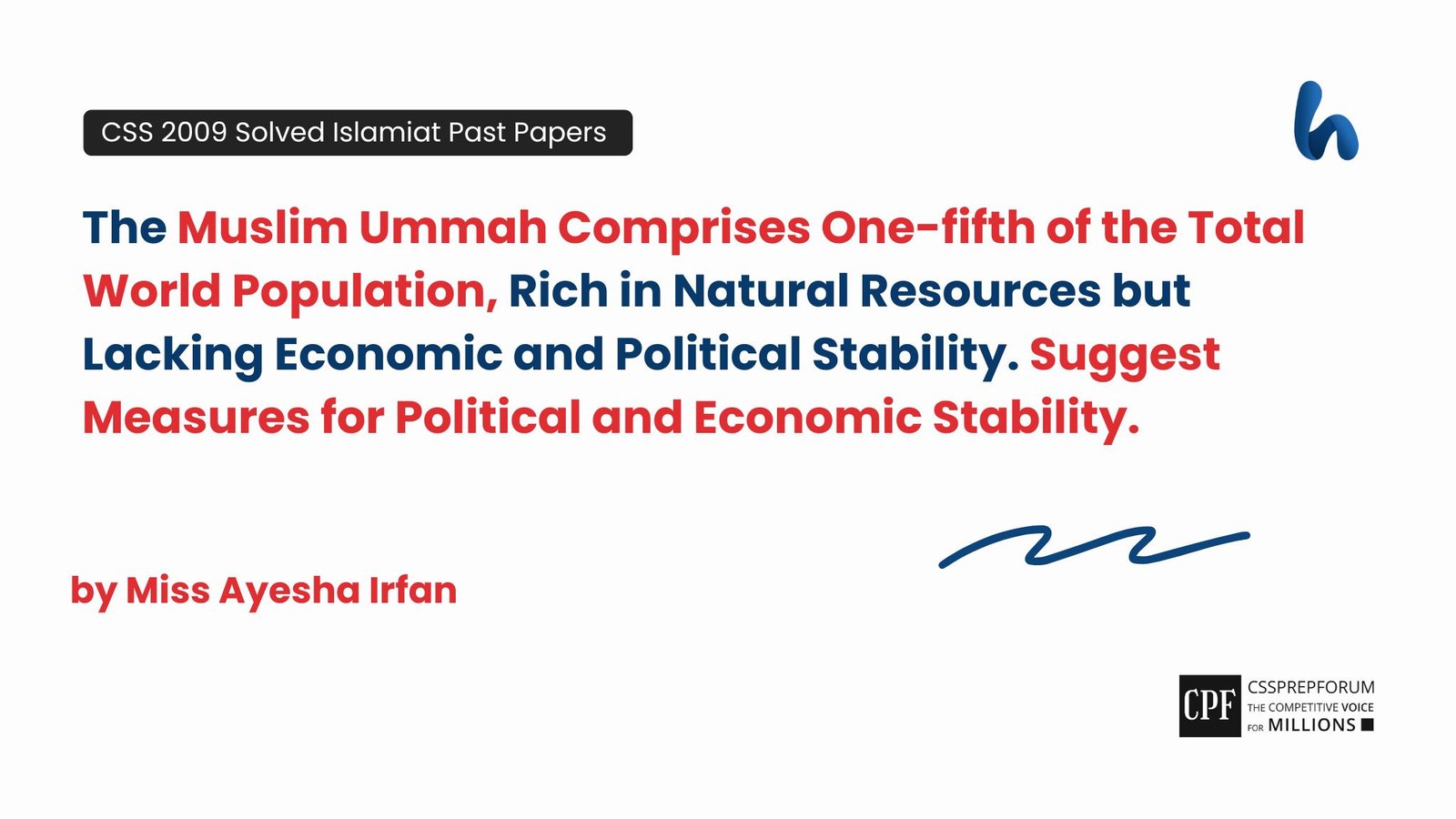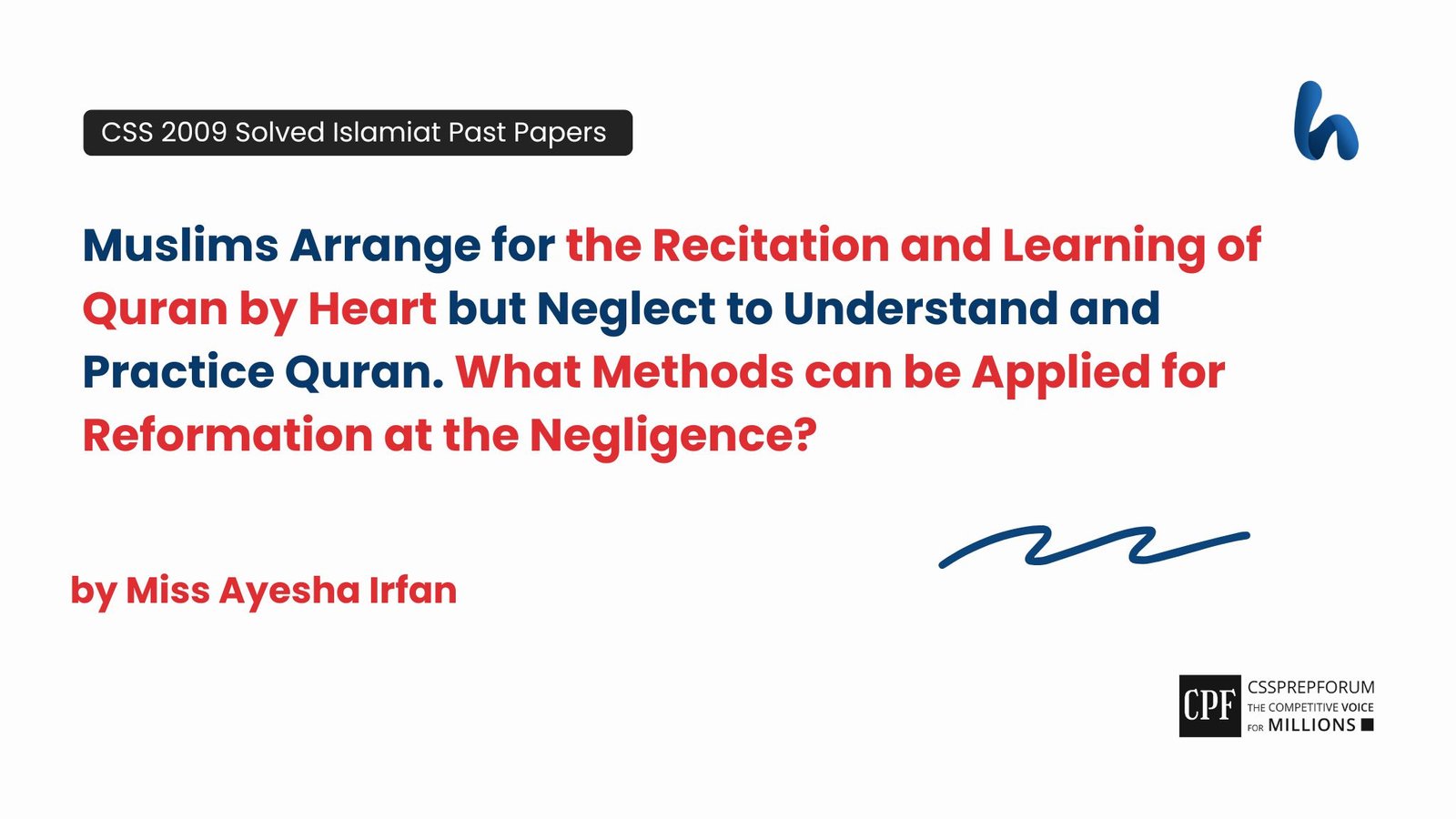PMS 2017 Solved Pakistan Affairs Past Papers | The Punjab Protection of Women against Violence Act 2016
The following question of PMS Pakistan Affairs 2017 is solved by Miss Bushra Arooj, the best Pakistan Affairs Coach, on the guided pattern of Sir Syed Kazim Ali, which he taught to his students, scoring the highest marks in compulsory subjects for years. This solved past paper question is uploaded to help aspirants understand how to crack a topic or question, how to write relevantly, what coherence is, and how to include and connect ideas, opinions, and suggestions to score the maximum.

Outline
1-Introduction
2-Historical Context behind “The Punjab Protection of Women against Violence Act-2016”
3-Understanding “The Punjab Protection of Women against Violence Act-2016”
4-Key Features of the Act-2016
- Framework for the Protection
- Support System
- Police Responsibility
- Judicial Powers
5-Different Court Orders which can Provide Relief to Women under the Act – 2016
- Interim Orders
- Protection Orders
- Residence Orders
- Monetary Orders
- Enforcement Mechanism
- Women Protection Officers (WPOs)
- Violence Against Women Centers (VAWCs)
- District Women Protection Committees (DWPCs)
7-Conclusion

Answer to the question
Introduction
The Punjab Protection of Women against Violence Act 2016, a legislative measure, aims at addressing all kinds of violence against women in the Punjab province. Accordingly, the act not only safeguards women’s rights but also deters future violence by penalizing the defendants, implementing strict rules, and establishing accountability and transparency in all its offices and centers. For this purpose, the act involves courts, police officers, and stakeholders for timely investigation, monetary support to aggrieved persons, and provision of shelters, medical care facilities, and safety services. Moreover, the Act overpowers all previous inadequate and ineffective laws established as accountability, transparency, law implementation, immediate actions, and protection of victims from crime are among its prior strategies that assist women file complaints without fear of insecurity and threats. Reports show that jurisdictions with strict enforcement report a reduction in domestic violence by 30%. To conclude, the Act 2016 proved to be effective in surpassing gender violence against women to some extent.
Historical Context behind “The Punjab Protection of Women against Violence Act-2016”
Historically, Pakistan, particularly Punjab, has been grappling with gender inequality and gender-based violence due to cultural norms and patriarchal societies, making women suffer domestic abuse, including honor killing, harassment, stalking, economic abuse and different forms of violence. Similarly, high volumes of violence, such as murders and public assaults have increased resulting in various movements and public protests for women’s protection. Also, women’s rights activists and organizations started advocating women’s rights and feminism. Apart from that, various laws also exist to favor and protect women and girls from gender-based violence. However, all the efforts have gone in vain since the laws proved inadequate, poor, and ineffective, and the movements have failed to support women on a large scale. Therefore, the Punjab Protection of Women against Violence Act 2016 promoted women’s rights, including support, protection, medical care, and societal services.
Understanding “The Punjab Protection of Women against Violence Act-2016”
Resultantly, in 2016 an act officially named the Punjab Protection of Women Against Violence Act, 2016 (PPWVA) was introduced by the province of Punjab, aiming at providing overall protection and support for the victims, women, facing all forms of violence. In its scope, the act addresses issues including, domestic violence; physical, emotional, and psychological abuse by intimate partners, economic abuse; financial control and deprivation, and stalking and harassment; cybercrimes. Moreover, under the act, during or at the initial stages of the filed cases, the court is obliged to provide the aggrieved person all kinds of protection, residence, or monetary support that assist in women’s safety and security. Also, the act enforces strict penalties, such as fines and imprisonment to the defendants to not only advocate the victim but also deter future violence.
Features of the Act-2016
Apart from its orders, Act-16 consists of different key features, ensuring accountability and transparency of the work.
- Framework for the Protection
Initially, the government, according to this act, is obliged to protect the aggrieved person, give shelter to her, meet her demands, and not allow the defendant or the defendant’s relatives to approach the victim in any case, whether in court, during inspection and investigation, and in residence. Moreover, the victim should be given the full authority to decide to stay in residence or in shelter homes. Thus, the framework for the protection of the victim or aggrieved is essential during the procedure.
- Support System
Next, it is also mandated for the legal authorities under the act to provide overall protection, including healthcare facilities, shelter, monetary help, counselling, and legal aid. Importantly, the authorities are obliged to pay rent and provide living accommodation to provide the victim with a comforting environment.
- Police Responsibility
Additionally, Police are obliged to take immediate responsibility regarding the case. They should file complaints, investigate timely, support victims, respect the victim’s privacy, and give women access to whatever they need for their defense. Also, police should not put off their inspection, enabling the criminal escape.
- Judicial Powers
Above all, it is crucial for the judicial powers to issue orders in accordance with the support, safety, and protection of the women. Accordingly, on receipt of the complaint, the first hearing of the court shall not exceed seven days, the defendant should show before seven days, and the case should be solved in the span of 90 days.
Different Court Orders Which Can Provide Relief to Women under the Act – 2016
- Interim Orders
To begin with, courts are allowed to issue immediate orders during the ongoing procedure to support and protect aggrieved. According to reports, every day, 32 women are abducted in Punjab. Therefore, it is crucial for the court to pass such interim orders at any stage of the complaint and should not allow pending procedures to compromise the victim’s safety.
- Protection Orders
Moreover, in case the court is satisfied the violence has been committed or is likely to be committed, it should pass orders to direct the defendant to specific rules. The rules direct the defendant not to have any communication with the aggrieved or without exception; he must avoid entering the victim’s residence or workplace in any case, wear ankle or wrist bracelets GPS trackers to avoid future attacks on the victim’s dignity or reputation, surrender weapons and firearms, and avoid causing violence to dependent and any person involved in protecting the aggrieved person. According to reports, 70% of women stated they feel safer getting protection orders under the Act 2016. Thus, keeping the victim separated from the defendant before and during the procedure creates a safer environment for the aggrieved.
- Residence Orders
Similarly, under the act-2016, the court can avoid evicting the victim from her marital house. The victim is given the authority to choose her residence whether it is her home or a shelter house. Under the act, the victim has the right, title, or beneficial interest in her house. Also the accused is also obliged to arrange the house for the victim. The study states that about 60% of women in domestic violence fear losing their homes as a barrier to leaving. However, the court shall also provide alternative accommodation and shelter housing to the victims.
- Monetary Orders
Apart from that, at any stage of the case, the accused is directed to meet the overall expenses of the victim under the Act 2016. For this purpose, the court directs the accused to pay monetary relief within a specific period of time, take medical expenses of the victim, and provide maintenance and shelter to the victim and dependent. Researches show that economic dependency is the significant factor that causes the aggrieved to tolerate abusive relationships.
- Enforcement Mechanism
Besides, violation of court orders can lead to imprisonment for a year or monetary compensation from Rps50,000 to Rps200,000. Strong penalties for the victims can deter the potential defendant from committing domestic violence, creating a safer environment for the victims. Reports show that jurisdictions with strict enforcement report reduction in domestic violence by 30%.
- Women Protection Officers (WPOs)
Importantly, the Act provides the Women Protection Officers (WPOs) to help victims in filing complaints and completing legal procedures, ensuring the rights of victims. The WPOs under the Act supervise the protection system, ensure valid reports and documentation, provide counselling services to victim, respond to the queries of women, rescue the women and admit her children, ensure admission of women in shelter homes, and supervise staff under their authorities. Therefore, the WPOs play crucial role in protecting and rescuing the victims.
- Violence Against Women Centers (VAWCs)
In a same manner, the Violence against Women Centers (VAWCs) provide comprehensive services, including healthcare facilities, home shelter, and further legal aid to the victims. Under the Act, these centres facilitate medical examination, such as forensics, provide first aid relief, collect credible evidence, register information against perpetrators of violence, maintain an audio-visual record of all actions, provide psychological counselling to the aggrieved person, and mediate between the aggrieved and the defendant for solutions of disputes under the Act. According to statistics, the establishment of VAWCs centres has led to the trust of women and an increase in reports by women seeking help. Multan witnessed a 40% increase in reports after establishing VAWCs. Thus, the VAWC centers are crucial in providing relief to the victims.
- District Women Protection Committees (DWPCs)
Over and above, under the Act, the District Women Protection Committees are established to oversee the implementation of the Act at the district level, ensuring transparency and accountability and coordination among stakeholders. The authorities in the DWPCs have district authority and nominate four non-official members in the WPOs to make sure any member of the community/communities is not entitled to any remuneration or fee or charges for services rendered under the Act. According to reports, areas with active DWPCs have higher satisfaction rates among women receiving services.
Conclusion
In summary, unlike previous ineffective and poor laws, the Punjab Protection of Women against Violence Act 2016 (PPWVA) has been proven to be a significant measure in countering gender-based violence in Punjab to some extent. To elaborate, owning to marginalized cultural norms and patriarchal societies, the women in Punjab have not only been deprived of equal rights but also were subjected to domestic and financial violence. As a result, the government undertook an act called “The Punjab Protection of Women against Violence Act 2016”, aiming at providing safety and financial support, along with medical and health care services, to the aggrieved persons. Moreover, under the Act, the courts and the relevant stakeholders, centres, and offices are obliged to function with accountability, utmost responsibility, and transparency, making safer grounds for the women to complain without fear and threats. Therefore, the PPWVA Act established in 2016 plays a pivotal role in decreasing gender-based violence against women owning to its specific key features.
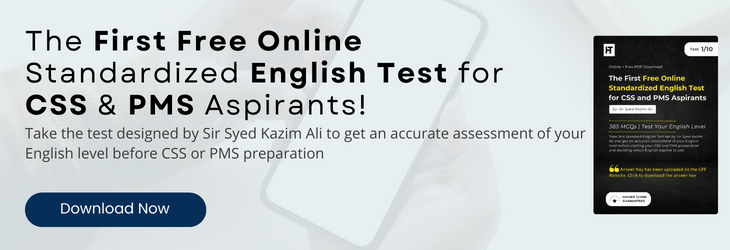
CSS Solved Past Papers’ Essays
Looking for the last ten years of CSS and PMS Solved Essays and want to know how Sir Kazim’s students write and score the highest marks in the essays’ papers? Then, click on the CSS Solved Essays to start reading them.
CSS Solved Essays
CSS Solved General Science & Ability Past Papers
Want to read the last ten years’ General Science & Ability Solved Past Papers to learn how to attempt them and to score high? Let’s click on the link below to read them all freely. All past papers have been solved by Pakistan’s top CSS GSA coach having the highest score of their students.
General Science & Ability Solved Past Papers


